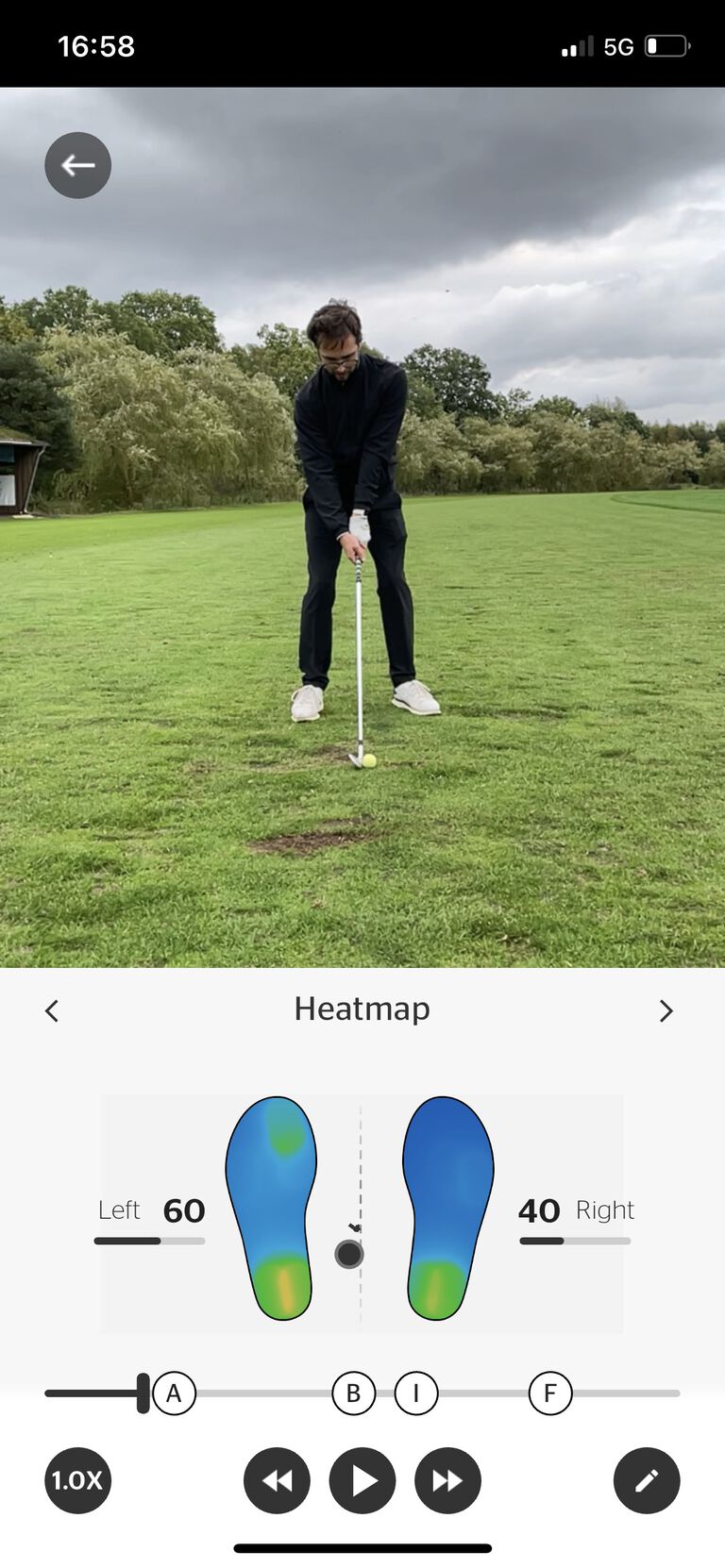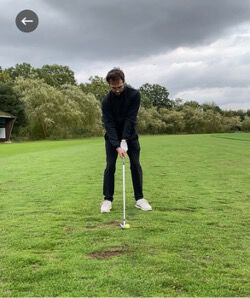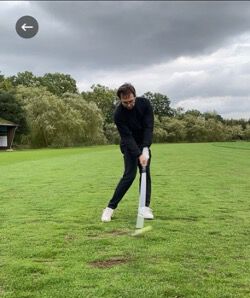Off-season training
How to improve with BAL.ON in the off-season
As the summer is slowly fading off, you might still be gifted the occasional round of golf in perfect conditions, maybe even fresh and reinvigorating. However, the off-season’s later days, particularly in the Northern European hemisphere, are bound to be windy, wet, unfun, and short. So, as time on the range gets even scarcer, how would you use it? What should inspire your off-season training?
Thankfully, there is absolutely no shortage of training tips for golfers in the off-season on the internet. The common approach is to turn to the athletic foundation of golf and work on each of the large muscle groups. You are to mobilize, strengthen and stretch your arms and shoulders, entertain your core, train your legs.
We won’t argue with those ideas. If working athletic drills into your normal training schedule is no problem for you, by all means go ahead and do them. All BAL.ON pros have their own little athletic routine and follow it religiously. Also, even a little bit of athletic training is beneficial, not least because it’s simply a good base for golf-specific moves and thus helps prevent injury.
What do you lose the most during winter?
Yet for those not entirely the sovereign of their time, i.e. almost all of us, the question might be not so much about sculpturing our abdominal muscles or rather do more box jumps to keep our legs in shape. The question is more likely, “What do I lose the most during the winter months? And how can I prevent that loss?”
Going from our experience with clients, teams, even pros, the greatest risk during off-season is the loss of basic technique and your intuitive command of it. Your stance is off. Just slightly, but it affects your hitting. Your balance is off. The shifting doesn’t quite fit the timing. The hand positioning is lose, the hip rotation is sluggish. You can still swing, but there’s a rattling in your inner machinery. It’s not only disconcerting – it makes a lot of balls go where you don’t want them to go.
Stick to the basics and keep your form
In other words, it is the loss of form. That’s what prompts us to suggest a slightly different route for your coming off-season training. Especially when, in the fight with all your other obligations, your training hours rarely get the upper hand. If that is the case, we are slightly partial for you to build skill rather than muscle. With these following two drills, you can make the most of a 30-to-40-minute training session on the range. More is unlikely in autumn or winter condition or amounts to sadism. (Then again, there is a little sadist in every coach, isn’t there?)

Keep your Setup solid
It is easy to lose the feeling for the correct setup, even though – or maybe because – it is not the most challenging of golf moves. Try to maintain about 60% pressure on your lead leg (the leg facing your target) and 40% on your trail leg (the leg pointing away from your target). Check with the BAL.ON live heatmap. Aim to have an even pressure distribution along the length of your feet – neither too much centered on your toes nor too much on your heels. Once you’re there, complete your swing. Allow yourself the luxury of just minding the setup distribution and nothing else. For this drill, don’t worry about timing, rhythm, or even shot length. Just try and let the body angles that compose the 60/40 ratio sink in deep into your muscle memory.

Optimize your Impact position
At impact, you should have some 70% pressure on your lead leg and roughly 30% on your trail leg. From a face-on perspective, be sure to have your hands slightly in front of the ball, i.e. for a right-handed golfer, slightly to the left of the ball. Let hips and upper body rotate smoothly towards the target. Again, keep the longitudinal pressure distribution even, neither too much on your toes nor on your heels. Once you have that down, focus on the 70%/30% ratio and try to reach it precisely on every shot. Blank out everything else. Then include the proper hand positioning and rotation. Notice how the 70% pressure on the lead leg coincides with the hand positioning to the left of the ball.
Mix up to spice up
Monitor your moves with the BAL.ON live heatmap first. Then try a number of runs without heatmap help. Finally check yourself again. Do you make the numbers? Does your perception and the pressure reality match? Once you have a sufficient number of repetitions under your belt, you can also try mixing both drills: assume setup, then impact, then back to setup. Let your weight distribution jump to and fro, as well as the hand position and the body rotation.


Here both pictures again next to each other, left showing setup, right impact position. Once you are familiar with either practice, mix them up: switch from setup to impact and back again, while trying to hit the correct pressure values. Try to become really fast and really spot on!
Range first, but home use works, too
Our recommendation would be to do these drills on the range, whenever it fits in your busy days. It might be a wet and cold experience, but the contact with nature plays an important part in the learning. Also, allotting a specific time of the day to the training, driving out to the range, changing into training attire – those are all small markers for your sporting brain. They help to keep practice hours important in your schedule and reduce the chance of interference from outside. That being said, one of the great advantages of BAL.ON as a training system is certainly that you can do these drills in your garage or even in your living room if need be (provided you show some kindness to other household members). So, on particularly crowded or inclement days, sooner than write off the training completely, do the drills at home.
Keep it simple, and keep at it
Some of our clients and testers react a little underwhelmed when we introduce drills of this kind. That’s understandable, as they hardly appear sensational at first glance. They might even strike you a little dull. However, try and find the joy in their simplicity. To become good at a sport like golf, with its complex and coupled moves, you need to cut the complexity down. And hence, you need a little appreciation for basic drills. It’s a coaching adage that frequently gets on peoples’ nerves, but it is still true: experienced musicians train scales, not songs. Likewise, good golfers train the basics, before they become better golfers.
Also, do not underestimate that these drills not only train pressure patterns or body positioning in specific swing phases. You also acquire important skills like proprioception and the ability isolate moves – both key elements for advanced technique training.
How will you start the next season?
All in all, when the next spring is on you, the days are finally getting longer and sunnier, and your golf fancy is being tickled, will you head start into the new season like cakewalk? Probably not, you will still need a little adjustment. Yet if you heed our off-season drills with a little regularity, you will at least be spared weeks and weeks of re-establishing your stance, your balance, your reliability in hitting the ball straight. Instead, with BAL.ON, you will find your feet easier, hit better, and have more fun where it matters – on the course.

